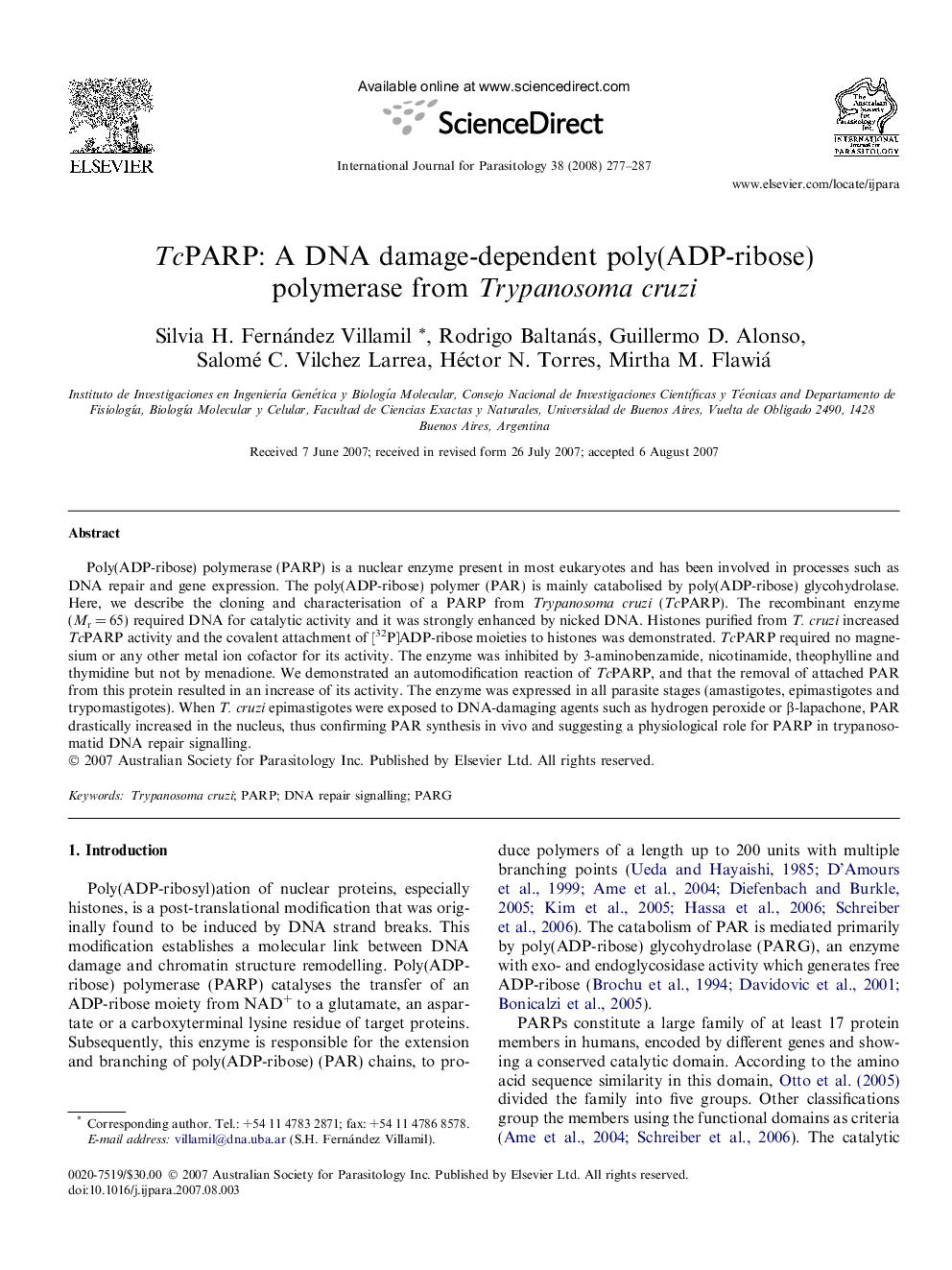| Article ID | Journal | Published Year | Pages | File Type |
|---|---|---|---|---|
| 8500330 | International Journal for Parasitology | 2008 | 11 Pages |
Abstract
Poly(ADP-ribose) polymerase (PARP) is a nuclear enzyme present in most eukaryotes and has been involved in processes such as DNA repair and gene expression. The poly(ADP-ribose) polymer (PAR) is mainly catabolised by poly(ADP-ribose) glycohydrolase. Here, we describe the cloning and characterisation of a PARP from Trypanosoma cruzi (TcPARP). The recombinant enzyme (Mr = 65) required DNA for catalytic activity and it was strongly enhanced by nicked DNA. Histones purified from T. cruzi increased TcPARP activity and the covalent attachment of [32P]ADP-ribose moieties to histones was demonstrated. TcPARP required no magnesium or any other metal ion cofactor for its activity. The enzyme was inhibited by 3-aminobenzamide, nicotinamide, theophylline and thymidine but not by menadione. We demonstrated an automodification reaction of TcPARP, and that the removal of attached PAR from this protein resulted in an increase of its activity. The enzyme was expressed in all parasite stages (amastigotes, epimastigotes and trypomastigotes). When T. cruzi epimastigotes were exposed to DNA-damaging agents such as hydrogen peroxide or β-lapachone, PAR drastically increased in the nucleus, thus confirming PAR synthesis in vivo and suggesting a physiological role for PARP in trypanosomatid DNA repair signalling.
Keywords
Related Topics
Life Sciences
Immunology and Microbiology
Parasitology
Authors
Silvia H. Fernández Villamil, Rodrigo Baltanás, Guillermo D. Alonso, Salomé C. Vilchez Larrea, Héctor N. Torres, Mirtha M. Flawiá,
